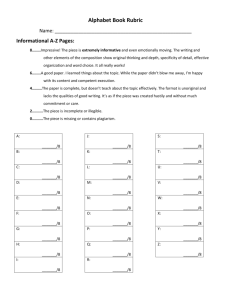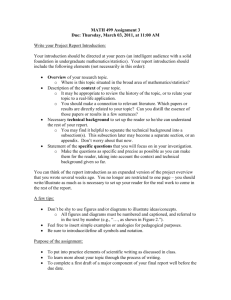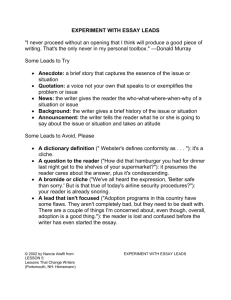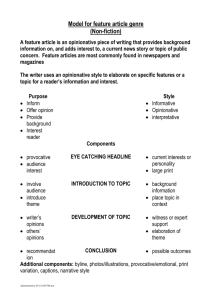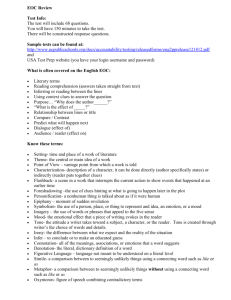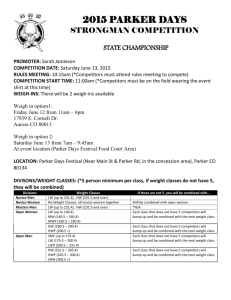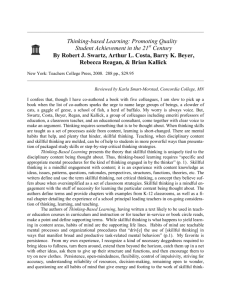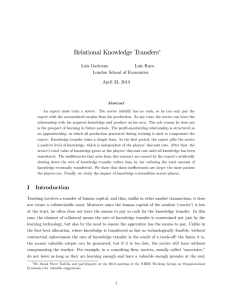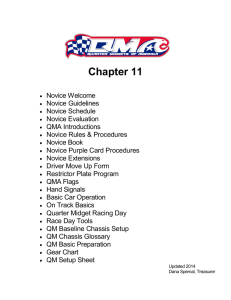Review Papers: Organization and Content
advertisement
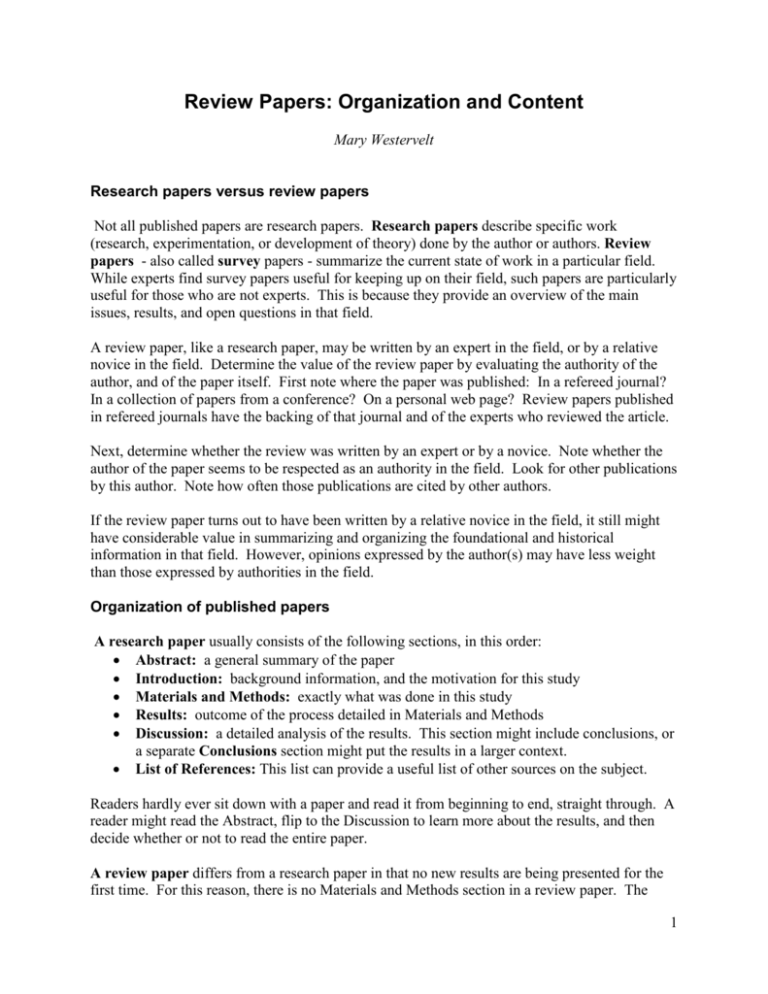
Review Papers: Organization and Content Mary Westervelt Research papers versus review papers Not all published papers are research papers. Research papers describe specific work (research, experimentation, or development of theory) done by the author or authors. Review papers - also called survey papers - summarize the current state of work in a particular field. While experts find survey papers useful for keeping up on their field, such papers are particularly useful for those who are not experts. This is because they provide an overview of the main issues, results, and open questions in that field. A review paper, like a research paper, may be written by an expert in the field, or by a relative novice in the field. Determine the value of the review paper by evaluating the authority of the author, and of the paper itself. First note where the paper was published: In a refereed journal? In a collection of papers from a conference? On a personal web page? Review papers published in refereed journals have the backing of that journal and of the experts who reviewed the article. Next, determine whether the review was written by an expert or by a novice. Note whether the author of the paper seems to be respected as an authority in the field. Look for other publications by this author. Note how often those publications are cited by other authors. If the review paper turns out to have been written by a relative novice in the field, it still might have considerable value in summarizing and organizing the foundational and historical information in that field. However, opinions expressed by the author(s) may have less weight than those expressed by authorities in the field. Organization of published papers A research paper usually consists of the following sections, in this order: • Abstract: a general summary of the paper • Introduction: background information, and the motivation for this study • Materials and Methods: exactly what was done in this study • Results: outcome of the process detailed in Materials and Methods • Discussion: a detailed analysis of the results. This section might include conclusions, or a separate Conclusions section might put the results in a larger context. • List of References: This list can provide a useful list of other sources on the subject. Readers hardly ever sit down with a paper and read it from beginning to end, straight through. A reader might read the Abstract, flip to the Discussion to learn more about the results, and then decide whether or not to read the entire paper. A review paper differs from a research paper in that no new results are being presented for the first time. For this reason, there is no Materials and Methods section in a review paper. The 1 paper will have an Abstract, and it may have a section called Introduction. However, the rest of the paper will be an overview of the topic, perhaps organized historically, perhaps organized by different treatments of the problems connected with the topic. The contribution of a review paper is the manner in which it synthesizes and presents important material in a field. The author may also point out needs for further research or development. Both research papers and review papers begin with an Abstract. Readers expect the Abstract of a paper to summarize the main points of the paper in about 200 words or less. A simple way to see the difference between a review paper and a research paper is to note the differences between the Abstracts. Table 1 summarizes these differences. Table 1: Abstract Structure in Research Papers and Review Papers. Each item listed will get one or two sentences in the Abstract. Abstract: Research Paper Abstract: Review Paper Summary of Introduction: Statement of broad problem/background (usually without citations) (In some journals, this part of the Abstract is missing.) Scientific hypothesis or goal of this Focus on an issue related to the broad experiment stated in general terms topic. Issue stated in general terms. (Full treatment usually concludes the Introduction ) Summary of Methods: Specific Statement of how this paper addresses numbers if it’s possible to state them the issue: Review of relevant experiments and results? Summary of briefly what is known in the field? Summary of Results: Specific data if possible, with some analysis Summary of Discussion: Statement of how the paper concludes: Hypothesis/hypotheses proven? Summary of issues, suggestions for Disproven? Generalizations? further research. Parts of a review paper The review paper, like the research paper, begins with an Introduction detailing the broad problem. The Introduction contains background information, and the motivation for the current study or analysis (or experiment, in the case of a research paper). Frequently, the Introduction ends with an explicit description of how the rest of the paper is organized. Introductions always contain frequent citations of other sources. After the Introduction, the structure of a review paper diverges from that of a research paper. Review papers do the following: • • Give enough background so that those learning about the field can get started. Contain frequent citations of other work throughout the paper, not just in the Introduction 2 • • • Summarize knowledge and trends in the field Critique results (results of the author(s), or of other researchers) Suggest avenues for future research: problems to solve, gaps in the knowledge to fill, ways to extend results to other materials or applications. How to use a review paper The review paper is particularly useful to a novice in the field, because it provides a foundation for further research and experimentation. Even an old review paper can be useful in helping a person understand how a field has developed. Make good use of a review paper, not just by carefully reading the paper itself, but by following the links provided by the sources cited in the paper. Note any open questions mentioned in the paper, and see if those questions have been answered in later work. Keep track of open questions that might guide your own research. As you read the paper, note important terms if they are new or unusual. If these terms are not defined, but seem to be commonly used in this field, look them up. A final way to use a review paper, or any paper for that matter, is to read it to learn how to improve your own writing. A skillful writer carefully chooses words and grammatical structures to guide the reader through what may be difficult material. For example, the skillful writer keeps in mind that the reader does not necessarily see the logical connections between sentences within a section. The writer takes pains to make sure that these connections are clear. Whenever you read a paper, note ways that the authors enable you to follow the logic of the paper, so you can employ the same techniques in your own writing. If you find that you can’t follow the logic of a paper, ask yourself whether the difficulty is the technical content, or the quality of the writing. If the style of writing puts a heavy burden on the reader, note what could have been done to make the reading easier. Then apply what you’ve learned about clear writing when you sit down to write your own paper. 3

